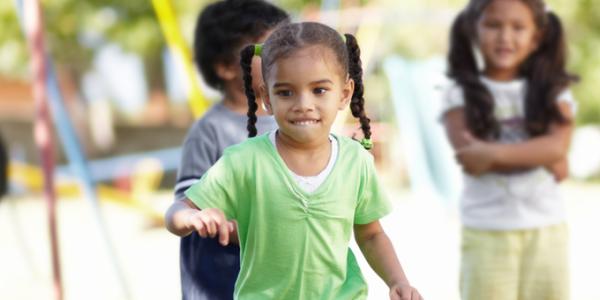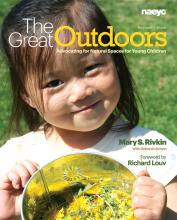Excerpt from The Great Outdoors: Advocating for Natural Spaces for Young Children, Revised Edition

Nature centers protect natural surroundings and invite the public to explore the wonders of the outdoors. Nature centers have increasingly added preschool education to their programming, using their grounds for teaching and exploration. Consider the following examples of nature center preschools.
Dodge Nature Preschool
A particularly beautiful preschool is at the Thomas Irvine Dodge Nature Center in St. Paul, Minnesota. Situated on 110 acres of woodland and meadows, the center includes a model farm, beehives, fruit trees, and flower and vegetable gardens. The center offers preschoolers a wide range of experiences with nature (in the winter, for example, children help tap trees and collect sap that will be used to make maple syrup). The preschool building, trimmed and furnished with local wood, was especially designed for young children. Each classroom has a door to the large outdoor play area. Low, wide windows enable children to see the outdoors at all times. Child-size binoculars, stuffed play birds, bird guides, and children’s books about birds encourage children to observe the outdoor environment. Bird feeders attract a variety of birds year round. A painting easel is located near the window along with many art supplies.
Children go outdoors every day for long hikes and playtimes. Families are expected to provide suitable clothing for the Minnesota weather. Children gather outdoor materials—leaves, stones, sticks, blossoms—to use in their play and projects. Both teachers and children initiate projects, and the curriculum flows from the teachers’ and children’s interests.
Schlitz Audubon Nature Preschool
Another preschool rich with nature experiences is the Schlitz Audubon Nature Preschool, located on 185 acres in suburban Milwaukee. Here children begin the day with outdoor play, sunshine or snow. On one snowy morning I saw the children digging, making snow angels, damming runoff from melting snow, climbing on stones, and climbing the perimeter fences. Later they headed inside for group time and a wide choice of nature-themed activities for individuals or small groups, then back outside they went. On this day they walked to a woodland area with stick bridges, stones, bushes, trees, and creeks that had formed from the melting snow. Although the yard was fenced, the impression was of being in the open snowy woods.
Children go outdoors every day, often hiking in the woods and on the Lake Michigan beach. In the winter, winds blow the lake water into huge frozen mounds on the shore, creating interior spaces—ice caves—that the children explore. The indoor classroom offers children many materials from the outdoors and tools for studying them—binoculars, magnifying glasses, aquariums, and cages.
Other Nature Preschools
The New Canaan Nature Preschool in Connecticut is the oldest such program in the country, founded in 1967. New Canaan has a conventional playground, but children explore the woods and marshes daily.
Other well-established nature preschools include the Nature Preschool at Chippewa Nature Center and the Nature’s Way Preschool at Kalamazoo Nature Center, both in Michigan. The Massachusetts Audubon Society conducts the second oldest nature preschool, Arcadia, and another one at Drumlin Farm. There is a preschool at Irvine Nature Center near Baltimore. As of 2012 there are 20-plus nature center preschools, with more planned (Bailie 2012). Larimore (2011), drawing on her experience founding the center at Chippewa, offers an accessible how-to guide on establishing such preschools.
Nature center preschools have tremendous resources for nature-centered education: spacious grounds and uniquely qualified teachers, who typically have backgrounds in both environmental education and early childhood education. Chippewa, Dodge, Schlitz, and Irvine have used these resources to benefit children and also to sponsor teacher trainings and conferences to share their knowledge.
From The Great Outdoors: Advocating for Natural Spaces for Young Children, Revised Edition, by M.S. Rivkin, with D. Schein. Copyright © 2014 by the National Association for the Education of Young Children.
Learn more about this book
Resources
Recommendations
For Authors & Photographers
Catalog
Webinars
NAEYC Books List
